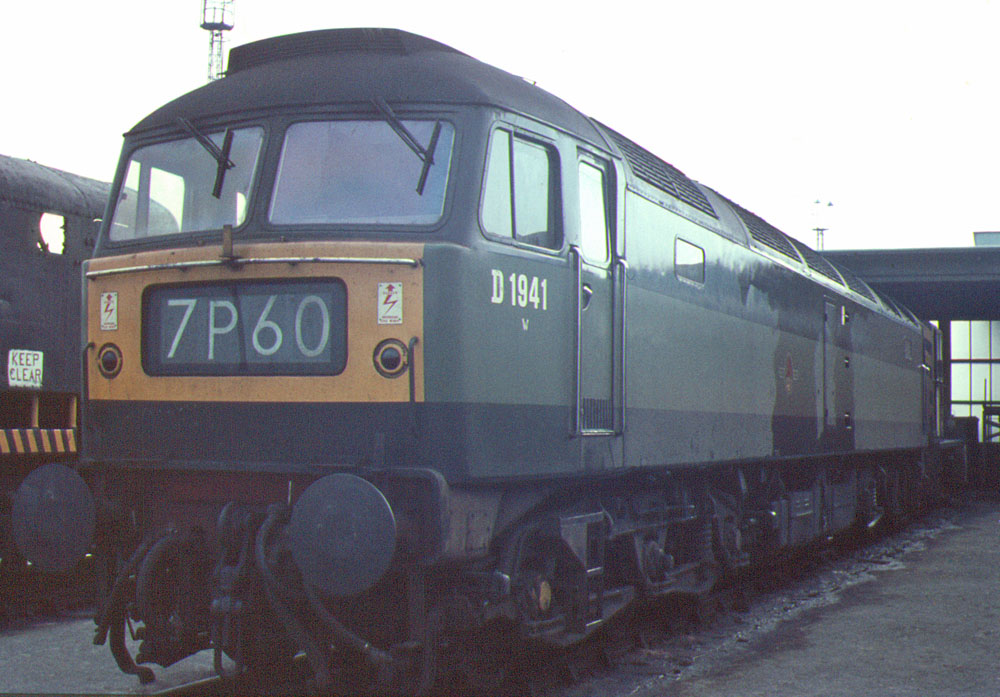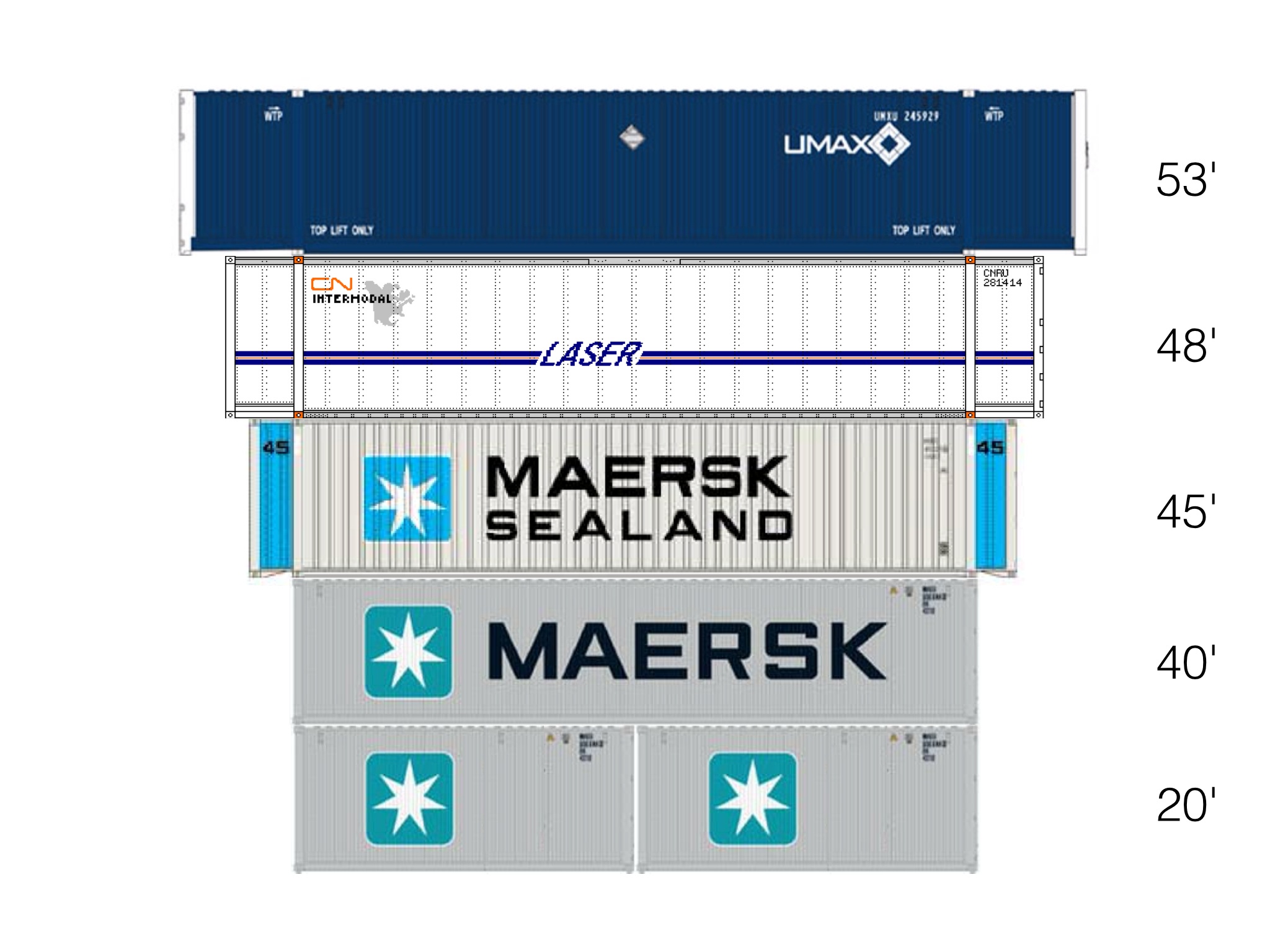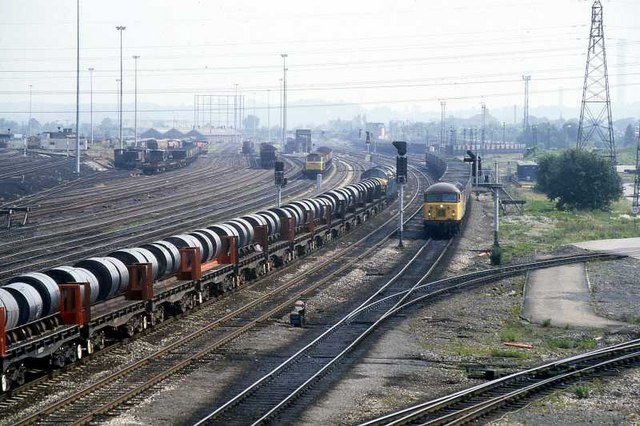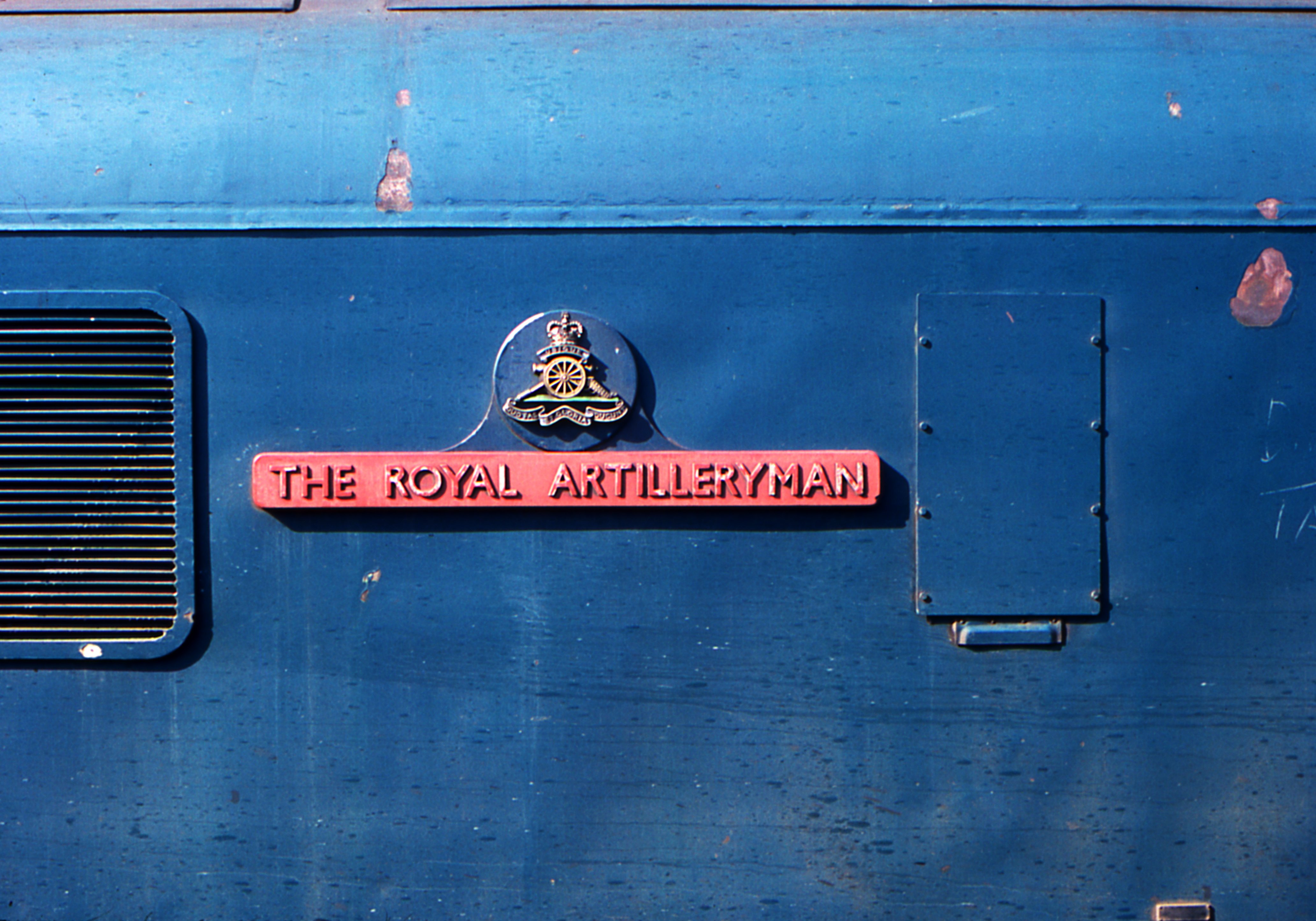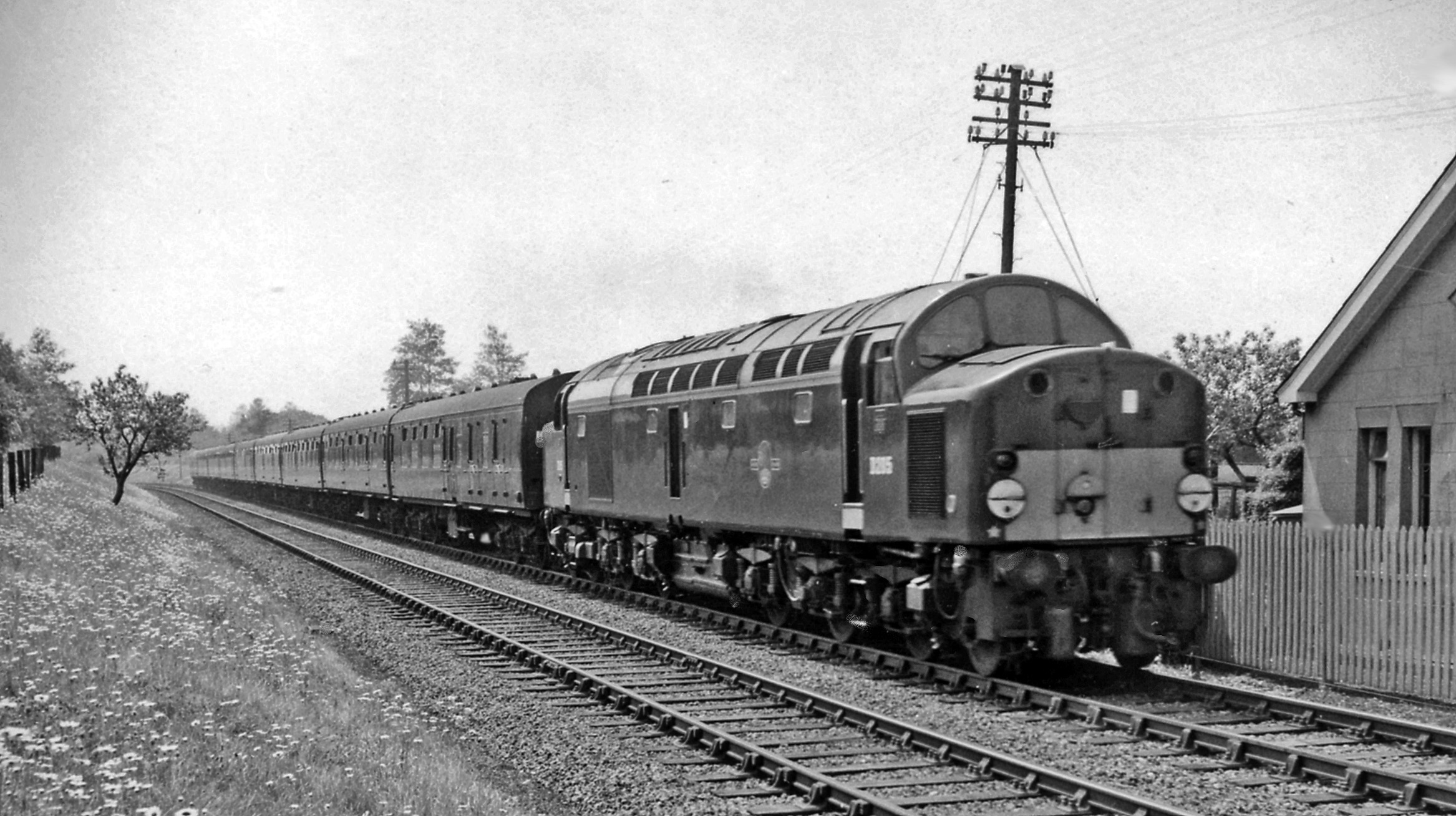|
Longsight Diesel TMD
Longsight Diesel TMD is a railway diesel locomotive traction maintenance depot (TMD) situated in Longsight, Manchester, England. The depot code is LO. The depot is located south of Manchester Piccadilly on the eastern side of the line to Stockport. There are various roads in which individual train sets can be overhauled. History In 1987, the depot had an allocation of Class 08s and DMUs. Although, Classes 31 and 47 could also usually be seen stabled at the depot. Allocation and services In 1979 Longsight supplied shunters to ten different locations. Locally three Air-Braked locos covered operations as depot pilot, at Mayfield parcels depot and also Trafford Park Container terminal with this turn also covering operations at Manchester International Freight Terminal. Five further shunters were outstationed to Guide Bridge working Dewsnap Yard and Ashburys Yard. Further afield one shunter worked Stockport carriage and parcels sidings while another operated freight trips in th ... [...More Info...] [...Related Items...] OR: [Wikipedia] [Google] [Baidu] |
British Rail Class 47
The British Rail Class 47 or Brush Type 4 is a class of diesel-electric locomotive that was developed in the 1960s by Brush Traction. A total of 512 Class 47s were built at Brush's Falcon Works in Loughborough and at British Railways' Crewe Works between 1962 and 1968, which made them the most numerous class of British mainline diesel locomotive. They were fitted with the Sulzer 12LDA28C twin-bank twelve-cylinder unit producing though this was later derated to to improve reliabilityand have been used on both passenger and freight trains on Britain's railways for over 55 years. Despite the introduction of more modern types of traction, a significant number are still in use, both on the mainline and on heritage railways. As of December 2021, 78 locomotives still exist as Class 47s, including 31 which have been preserved. 33 further locomotives were converted to Class 57s between 1998 and 2004. Origins The Class 47 history begins in the early 1960s with the stated aim of ... [...More Info...] [...Related Items...] OR: [Wikipedia] [Google] [Baidu] |
ISO 668
ISO 668 - Series 1 freight containers — Classification, dimensions and ratings is an ISO international standard which classifies intermodal freight shipping containers ''nominally'', and standardizes their sizes, measurements and weight specifications. The current version of the standard is the Seventh edition (2020), which integrates version ''E''. The standard was prepared by Technical Committee ISO/TC 104: Freight containers, Subcommittee SC 1: General purpose containers. Introduced in 1968, ISO 668 currently regulates both external and internal dimensions of containers, as well as the minimum door opening sizes, where applicable. Minimum internal dimensions were earlier defined by ISO standard 1894:'' 'General purpose series 1 freight containers – Minimum internal dimensions'.'' Its second edition appeared in 1979, but was withdrawn, once revised by ISO 14961 of 1990. ISO 14961's current version is 2013, including Amendment 1 of 2016, last reviewe ... [...More Info...] [...Related Items...] OR: [Wikipedia] [Google] [Baidu] |
Railway Depots In England
Rail transport (also known as train transport) is a means of transport that transfers passengers and goods on wheeled vehicles running on rails, which are incorporated in Track (rail transport), tracks. In contrast to road transport, where the vehicles run on a prepared flat surface, rail vehicles (rolling stock) are directionally guided by the tracks on which they run. Tracks usually consist of steel rails, installed on Railroad tie, sleepers (ties) set in track ballast, ballast, on which the rolling stock, usually fitted with metal wheels, moves. Other variations are also possible, such as "slab track", in which the rails are fastened to a concrete foundation resting on a prepared subsurface. Rolling stock in a rail transport system generally encounters lower friction, frictional resistance than rubber-tyred road vehicles, so passenger and freight cars (carriages and wagons) can be coupled into longer trains. The rail transport operations, operation is carried out by a ... [...More Info...] [...Related Items...] OR: [Wikipedia] [Google] [Baidu] |
Longsight Electric TMD
Longsight Electric TMD is an AC electric railway locomotive traction maintenance depot situated in Longsight, Manchester, England. It is one of the largest train depots in the United Kingdom and can hold 179 carriages at any one time. History Erected in 1842 by the Manchester and Birmingham Railway, the depot consisted of workshops, a carriage shed and the first engine shed; this included a 12-stall polygon, or roundhouse, about 130ft in diameter. In 1987, the depot had an allocation of Classes 303 and 304 EMUs, although electric locomotives of Classes 81, 85, 86 and 87 were also regularly seen stabled here. A group of Class 86 locomotives were allocated here in the 1990s and early 2000s to operate Virgin Cross Country's electric services. Present The depot is used currently by Northern Trains, Avanti West Coast and CrossCountry. Overnight, Northern Trains stores a mixture of DMUs, such as Class 150 and Class 195, and CrossCountry stables several Class 220 or C ... [...More Info...] [...Related Items...] OR: [Wikipedia] [Google] [Baidu] |
Toton TMD
Toton Traction Maintenance Depot or Toton Sidings is a large traction maintenance depot located in Toton, Nottinghamshire. The TOPS depot code for the depot is TO. Before TOPS, the shed code was 16A (18A prior to 1963). Prior to the 2021 Integrated Rail Plan for the North and Midlands, the site was the proposed location of the East Midlands Hub railway station on the Leeds Branch of HS2. History The history of the development of Toton is highly associated with the history, development and decline of the coal industry in England. The Midland Railway had developed the Midland Main Line from the 1860s, and had a developing revenue from coal traffic from both the Yorkshire and Nottinghamshire coalfields to the power stations of the industrialised West Midlands. This traffic was added to by the fact that most towns also had their own gasworks, with coal delivered by rail to their own private sidings, and the rapidly developing domestic use of coal for heating and cooking. With nee ... [...More Info...] [...Related Items...] OR: [Wikipedia] [Google] [Baidu] |
British Rail Class 45
The British Rail Class 45 or Sulzer Type 4 are diesel locomotives built by British Railways' Derby and Crewe Works between 1960 and 1962. Along with the similar Class 44 and 46 locomotives, they became known as ''Peaks''. History The Class 45s became the main traction on the Midland Main Line from 1962, and their introduction allowed considerable acceleration of the previous steam-powered service. The Class 45s remained the main source of power on the Midland Main Line up to 1982, when they were relegated to secondary services following introduction of HSTs on the route. From 1986 Class 45s virtually disappeared from the line. From the early 1980s until their withdrawal c.1988, the class were regular performers on the North Trans-Pennine line working services from Liverpool Lime Street to York, Scarborough or Newcastle via Manchester Victoria, Huddersfield and Leeds. These trains were usually formed of early Mark 2 carriages, of up to seven in a typical train. Naming 26 C ... [...More Info...] [...Related Items...] OR: [Wikipedia] [Google] [Baidu] |
British Rail Class 127
The British Rail Class 127 diesel multiple units were built by BR Derby in 1959. Thirty 4-car units were built, formed of two outer driving motor vehicles, sandwiching two intermediate trailers which were classified class 186. The technical description of such as 4-car unit was DMBS + TSL + TS + DMBS. Numbering Usage The units were almost exclusively used on London St. Pancras to Bedford commuter services, which earned the class the nickname "Bed-Pan" units. The class was maintained at a new purpose-built depot at Cricklewood. Powertrain Unlike other "Heritage" DMU units, the class 127 units had hydraulic transmission (as opposed to the more standard mechanical transmission). The gear selector in the driver's cab had a "D" position where "4" would be on other standard transmission units. As built, these units were coded Blue Square, and were therefore able to work with mechanical transmission units, provided the driver remembered to use 1,2,3,D instead of just selecting D. T ... [...More Info...] [...Related Items...] OR: [Wikipedia] [Google] [Baidu] |
Carlisle Kingmoor TMD
Carlisle Kingmoor TMD is a railway traction maintenance depot situated in Carlisle, England. The depot is operated by the Direct Rail Services (DRS). The depot was originally used to service diesel locomotives and diesel multiple units. The current depot code is KM. The original steam shed was called Carlisle (Kingmoor) and its shed code was originally 68A and later 12A. The current depot is located on the opposite side of the West Coast Main Line to the original steam shed and was officially opened on 1 January 1968. Under British Rail control, the depot closed in 1987 and lay derelict until 1998 when the site was taken over by DRS. Since then a number of developments have taken place with the installation of a sand tower and increased office space. Kingmoor marshalling yard is situated immediately to the north of the site. On 22 July 2017 DRS organised an open day at Carlisle Kingmoor TMD. During the open day, loco 66301 was named after the depot, receiving plates with the ... [...More Info...] [...Related Items...] OR: [Wikipedia] [Google] [Baidu] |
British Rail Class 108
The British Rail Class 108 diesel multiple units were built by BR Derby from 1958 to 1961, with a final production quantity of 333 vehicles. Overview The 108 was formed as a 2, 3, or 4 car unit. Its aluminium body led the type to be classed a lightweight unit. These units stayed in regular service until 1990, when they began to be withdrawn from traffic. They were replaced on regional services by the new '' Sprinter'' derivative units, or by ''Turbo'' units on services around London. The final units lasted in traffic until October 1993, although many saw further use in departmental service, as sandite or route-learner units. Good condition on withdrawal and lack of asbestos has ensured that many of this class are now used on preserved railway lines. Orders Accidents and incidents *On 19 October 1987, the Glanrhyd Bridge over the River Towy at Llandeilo, Carmarthenshire was washed away by floodwater, a passenger train operated by a Class 108 unit fell into the river. Four ... [...More Info...] [...Related Items...] OR: [Wikipedia] [Google] [Baidu] |
British Rail Class 100
The British Rail Class 100 diesel multiple units were built by Gloucester Railway Carriage and Wagon Company Limited from 1956 to 1958, designed and built in collaboration with the Transport Sales Dept. of T.I. (Group Services) Ltd. Introduction The class were designed to be lightweight to allow for good acceleration. None were selected for refurbishment and withdrawals started in 1969. The last passenger car was withdrawn from service in 1988. Under initial classification 1973, the DTCLs became class 143 but were later reclassified as class 100. DTCL 56111 was used as a training aid by the Ministry of Defence until 1985. Two sets entered Departmental service: DMBS 51122 and DTCL 56300 became ADB975664 and ADB975637 for use as the "Stourton Saloon" – the Eastern Region General Manager's saloon – for which the class gained a small amount of "fame"; this pair were scrapped, in 1990, at Mayer-Newman's yard at Snailwell, in Cambridgeshire. The other pair were ADB9753 ... [...More Info...] [...Related Items...] OR: [Wikipedia] [Google] [Baidu] |
British Rail Class 40
The British Rail Class 40 is a type of British railway diesel electric locomotive. A total of 200 were built by English Electric between 1958 and 1962. They were numbered D200-D399. They were, for a time, the pride of British Rail's early diesel fleet. However, despite their initial success, by the time the last examples were entering service they were already being replaced on some top-level duties by more powerful locomotives. As they were slowly relegated from express passenger uses, the type found work on secondary passenger and freight services where they worked for many years. The final locomotives ended regular service in 1985. The locomotives were commonly known as "Whistlers" because of the distinctive noise made by their turbochargers. Origins The origins of the Class 40 fleet lay in the prototype diesel locomotives ( LMS No. 10000 and 10001 ordered by the London, Midland and Scottish Railway and British Railways and D16/2 ordered by British Railways between 1947 a ... [...More Info...] [...Related Items...] OR: [Wikipedia] [Google] [Baidu] |
British Rail Class 25
The British Rail Class 25, also known as the Sulzer Type 2, is a class of 327 diesel locomotives built between 1961 and 1967 for British Rail. They were numbered in two series, D5151-D5299 and D7500-D7677. Background The Class 24 locomotives were the precursor of the Class 25 design but after the delivery of their first few units it became apparent that the speed ceiling of was unduly restrictive and the provision of additional power would be advantageous. In the course of normal development the power output of the Sulzer six-cylinder engine had been increased by to give a continuous traction output of at 750 rpm by the introduction of charge air cooling and the first locomotives to use this became known as Class 25 locomotives. The Class 25 were primarily designed for freight work, but a significant number were fitted with boilers for heating passenger trains. Throughout the 1970s they could be found at work across the whole of the British Rail network althoug ... [...More Info...] [...Related Items...] OR: [Wikipedia] [Google] [Baidu] |
